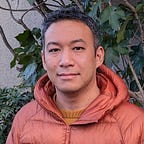I Took a Class at MIT Media Lab and I Learned a Lot
In addition to the core studio class I was taking at Harvard, there was another class that I struggled a lot last semester. It’s an MIT Media Lab class called MAS.S60.
This class was taught by three instructors: Professor Rosalind Picard who is also famous for establishing the affective computing field, Professor Cynthia Breazeal who leads the Personal Robot Group at the Media Lab, and Dr. Hae Won Park who is a researcher at the Personal Robot Group. Along with class numbering, MAS.S60, this class also had the title “Artificial Intelligence and Mental Health.”
Personally, I have been very much interested in the field of affective computing where it deals with something that relates to cognition, and not necessarily tangible. I heard from someone that this class is offered at MIT, and quickly jumped to participate.
Moreover, the Affective Computing Group at the Media Lab was one of the groups I applied to originally, and hearing that I can still take the class in this field without being a student at MIT, I thought that was a great opportunity to partake.
In Boston, there are many universities and there is a system where students can cross-register for classes at different institutions. I’m not entirely sure how it works for other schools, but for the case between Harvard and MIT, given that you satisfy the requirements, I think you can take almost any class you want. Last semester was only about taking classes at Harvard, however, being used to the environment more, I decided to stretch a little for a class at MIT. Soon after, my semester started with attending to both Harvard and MIT.
Designing your own tool for experiments
The class was a small seminar class. Every week, one of the instructors would give a lecture on some of the important researches done in the affective computing domain and have a discussion among the students.
In addition to this, students are required to submit a final project at the end of the semester. Students need to choose a topic to pursue, research about existing research, design/conduct experiments, analyze the results, and also write an academic paper that documents the overall process. I never had formal training as a scientist, and this whole process was definitely a challenge for me. But of course not having any previous experience wouldn’t account for a reason not to work on a project, so I started working on the project despite the struggle.
After giving some thought and based on the topics covered in the class, I decided to work on a project which attempts to understand and estimate the mental state of a given smartphone user based on the keyboard input pattern from the smartphone. The project also had a captological aspect by not just estimating the mental state but also the system giving moments to exercise meditation to relieve the stress which the user might be experiencing.
After doing some preliminary search, I saw a number of papers being published in the same realm and seeing that it’s not a topic that is far off, I went on to design the UX with my project partner from the class, who is also a fellow MDE student! I also teamed up with a data scientist who was auditing the class.
To obtain the keyboard input pattern from a smartphone, I developed a website that collects the keyboard input pattern for an experiment. I developed the website using p5.js and stored the collected data on Firebase.
Many comments added on my paper
A project was also due at the end of the semester for this project. I’ve never written a scientific paper, but this class gave me the opportunity to do that for the first time, and it was wonderful training.
After having my instructors have a look at the paper, there were countless comments. What I feel particularly grateful about is that all of these instructors are world-class figures in their fields. It’s astonishing to see all of them putting the time to teach their students. They all have read my paper thoroughly and all of the feedbacks were meaningful. I’ve been writing a lot of decks as a part of my profession but realized how illogically I’ve been writing for the whole time.
My Biggest Takeaway from MAS.S60
To be honest, I wouldn’t say the result the project was satisfactory, but the overall process was great. I read numerous papers, searched for more papers that relate to the research I am interested in, designed an experiment by myself, conducted that experiment, and then finally gathered the result into a research paper. This whole experience is highly valuable. I also loved working with my project partners. I love it when teams come together and everybody offers something different on the table. This project would have been impossible without my partners, and I’m glad I was able to work together with them.
In the business world, people say you need to be logical. But looking at the business world from academia, I thought things are loose. Once I’m back in the business world, I’d like to leverage this whole experience so that I can execute the project with higher precision.
